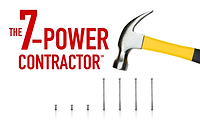Getting buy-in from your field staff

Years ago (and maybe still today) it was in vogue at many shops I worked at to see a mannequin dressed up like a technician in the perfect company uniform in some location.
The funny thing — well, to me anyway — is it was always abused in one way or another. Crooked hat, limbs missing, drawn-on mustache and things even this ex-New Yorker is embarrassed to share.
The mannequin was unguarded. It became an easy target for fun and for downright malicious foul play.
Why the abuse?
To me, it was the staff’s way of rebelling. They didn’t know where this mannequin came from, why they were supposed to relate to it and, in some ways, why management didn’t see how demeaning it was to be compared to it.
A decree from someone at the top that uniform standards were necessary resulted in the purchase of this thing plunked down for all to see as a reminder to get with the program.
The techs were never given a voice in the attire the company demanded they wear, let alone the reasons they should dress better and stay clean throughout the workday.
At fault was management missing the most important thing it must do if it hopes to instill a change and get people to willingly follow — starting with the why.
Why is different than a “What’s in it for me” attitude. The “why” is why we’re doing this. The WIIFM is the reward I get if I do it or the consequences if I don’t.
Why is the bigger goal for what’s being done and a chance to share the thinking behind a change desired.
Change is hard.
Without a compelling why, it’s much harder.
With buy-in on the why, the WIIFMs have a better chance of bringing about the change desired.
The temptation by management is to plow through and use entitlements to get people to comply. Well, if that’s all you’ve got to offer, you have a serious corporate culture issue brewing.
Trust can be destroyed by an uneasy use of technology. We, as owners, can easily put Nanny Cams into play and not share why. If the why is to spy, good luck with that. If it’s to protect people at work, it’s got a lot better chance of being accepted.
If you do have cameras up all over the place recording everything everywhere, aren’t you really saying you don’t trust your staff? And do you have a lot of extra time to watch videos 24/7/365? By the way, if you do have cameras up everywhere, you might be taking on extra liability. A quick check with your lawyer is in order.
The real problem with your staff is they lack a reason to believe we’re all on the same side. Sharing the why is helpful at making a reason to believe happen.
Why leads to what the game of business is all about.
Ellen Rohr, industry guru, shared this with me years ago, “Give them a really good game to play or they’ll find their own and you won’t like it.”
So true!
To fix this scenario of damaging your store-bought mannequin and a continued lack of uniform compliance, you need to be sharing with your techs how dressing right can mean they make more money for the company and themselves.
In ongoing meetings we explain the why behind the dress standards, as well as the why behind keeping our trucks neat and orderly.
Serving the customer
It’s all designed to serve the customer better, help the company be more profitable, as well as encourage the techs to be more productive and make more money.
The way we and our vehicles look from start to finish builds confidence and trust with our customers that a true professional is at their home.
Techs need to know they can’t look, smell or act like their competition, or they can’t expect to be worth more money.
What needs to be stressed is that their compliance with these simple standards demonstrates they can compete and move to the next level on the organizational chart.
Now, they have a positive WIIFM attitude.
But there will always be fence-testers, so we just wait. Someone will test us on our uniform and truck standards and when they do, we just open up the manuals that speak to the dress standards or truck stocking requirements. We pull out the photo and simply ask the following, “How is the way you’re dressed today like this photo or the way it’s described on this page in the manual?” or “How is the way your truck looks today like this photo or the way it’s described on this page in the manual?”
Discussion is over.
All that’s left to do is engage the Steps of Discipline that any owner must be willing to do with each staff member, every time.
Do this and watch your compliance and standards rise.
This article was originally titled “Why and WIIFMs” in the September 2015 print edition of Plumbing & Mechanical.
Looking for a reprint of this article?
From high-res PDFs to custom plaques, order your copy today!







